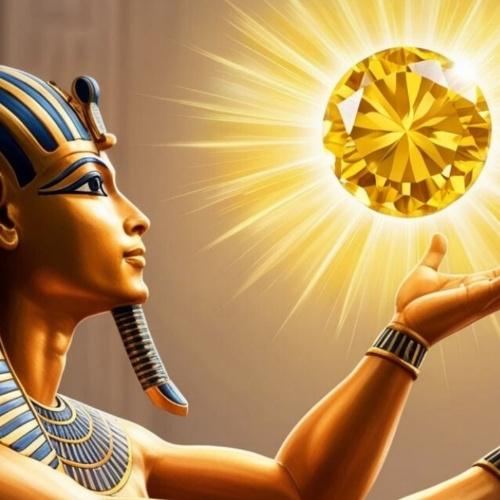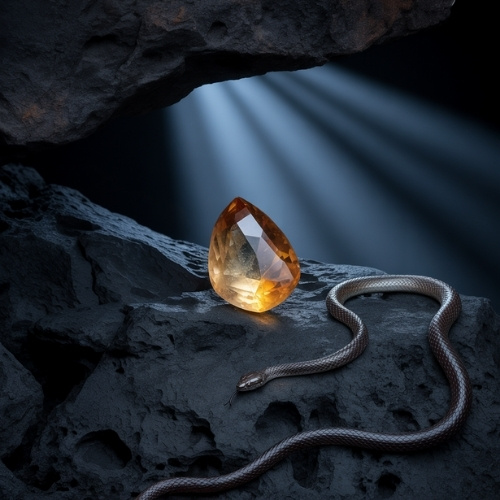Topaz has always held a memorable place in history, surrounded by myths, ancient symbolism, and cultural misunderstandings. For centuries it has been linked to solar power, divine strength, and protective energy. Its story is fascinating thanks to multiple gemstones all being labelled as topaz. As a result, the legends surrounding it are colourful, tangled, and deeply revealing about how our ancestors viewed the natural world.
🔗Gemstone myths and legends often influence how we view them today, from spiritual qualities to symbolic associations. Discover The Symbolic & Spiritual Meanings of Topaz
The Sun God’s Gift: Topaz and Ra
The ancient Egyptians held many beliefs around gemstones and the gods, and topaz was no exception. Legend says Ra, the sun god, left golden stones in the earth as a gift to humans. He was considered the mightiest of all the gods, ruler of the heavens. The one who brought light and life to the world.
These gems allowed mortals to carry a spark of his divine light with them. Glowing like miniature suns, they inspired awe across ancient Egypt.
Priests and pharaohs alike wore topaz, believing it brought them Ra’s favour and protection. Whether carved into sacred artifacts or set into ceremonial jewellery, the stone was treasured as talismans, beacons of his divine energy.
The Luminous Stones of Topazios
One of the most enchanting stories about topaz comes from a tiny island in the Red Sea called Topazios (today’s Zabargad). The island was said to be home to gemstones that glowed faintly in the dark. Miners would roam the island at night, spotting the stones, marking their location, and returning by daylight to dig them up.
Of course, the hunt for these precious gems wasn’t easy. Topazios was reportedly crawling with deadly snakes, making gemstone hunting extremely risky. According to legend, it wasn’t until King Ptolemy II of Egypt ordered the island cleared of serpents that miners could venture safely. Once the danger was gone, Topazios became a renowned source of topaz, with its gems reserved for pharaohs and Egypt’s elite.
A Case of Mistaken Identity
Here’s where the story takes a twist. While ancient texts call these glowing stones topaz, modern gemologists think they were probably a greenish-yellow type of peridot. This kind of mix-up isn’t unusual. Early civilizations often named stones by colour rather than by mineral type. After all, they didn’t have the tools we have for identifying gems.
It’s a reminder of just how tricky it can be to untangle gemstone myths. The same gem could have different names in different cultures, or very different stones might be grouped together simply because they looked alike.
Even with this little identity crisis, the legends of topaz continue to shine. From the sun god Ra’s golden gift to the glowing treasures of Topazios, these stories keep captivating imaginations, adding a touch of mystery and magic to the world of gemstones.
Just a quick side note – these topaz myths and legends make great marketing content, so feel free to retell them to your audience!
🔗 Want some guidance on using gemstone knowledge to market your jewellery business? Read Using Gemstone Knowledge to Boost Your Jewellery Sales
🔗 Working with topaz in your jewellery making? Take a look at my Jeweller’s Guide to Topaz
🛍️ Curious to find a pre-owned topaz for your next design? Check out what’s available.
📌 Save this blog post about topaz mythology so you can easily find it again.




